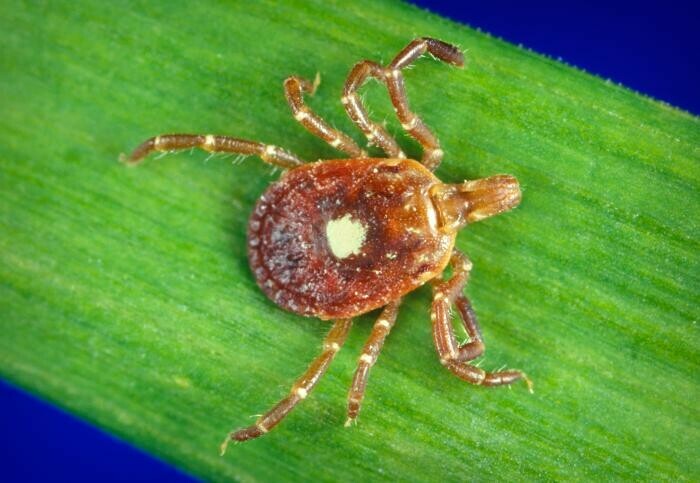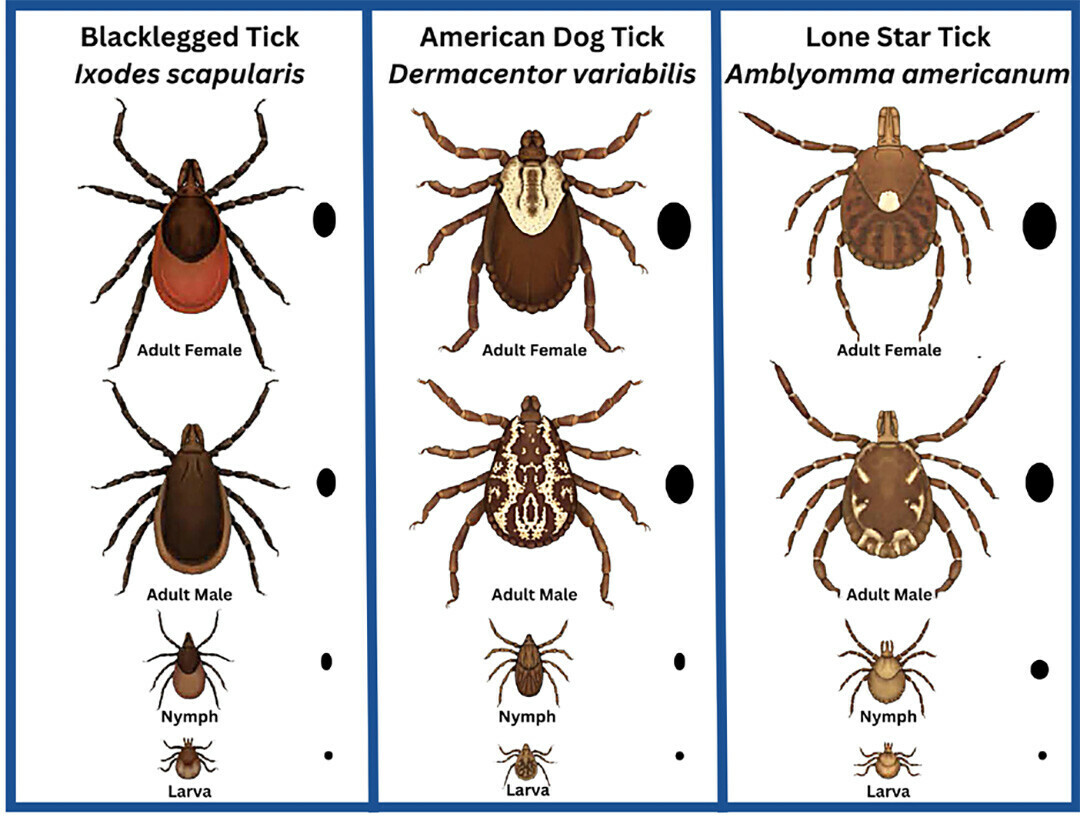Tick That Spreads ‘Red Meat Allergy’ Found in Eau Claire
Lone Star tick still rare here, but other ticks aren’t, health officials say

When you check yourself for familiar deer ticks and wood ticks after your outdoor fun this summer, you should keep your eyes peeled for another related critter as well, health authorities say.
The Eau Claire City-Council Health Department says the Lone Star tick has been moving into the Midwest from its original range in the southeastern and south-central U.S. “During our tick surveillance within our community, we do typically find a few of these ticks each year!” the department said in a recent media release.
Earlier this summer, UW-Madison-based researchers found a couple of Lone Star ticks in Eau Claire, WQOW News 18 reported.
The good news is that Lone Star ticks – easily identified by the single white dot on their back – don’t carry Lyme disease: In Wisconsin, the main vector for that illness is the deer tick.

The bad news? “However,” the health department explained, “they do transmit bacteria for other diseases (Ehrlichiosis, Heartland virus disease, Southern tick-associated rash illness (STARI), Bourbon virus disease, and Tularemia). Unlike Lyme disease which is typically transmitted after a deer tick bite that has been attached for over 24 hours, Ehrlichia can be transmitted within as little as six hours!”
Lone Star ticks are also infamous for spreading alpha-gal syndrome, better know as a red meat allergy. The allergy can take one to three months to develop after a tick bite. Symptoms include general itchiness as well as nausea, diarrhea, and indigestion, which typically occurs two to six hours after eating beef, pork, or lamb.
As the health department reminds us, “During peak grilling season in Wisconsin, this is a big deal!”
“It’s important to remember proper tick prevention such as tucking in shirts and pants into socks and wearing permethrin-treated clothing and shoes when in tick habitat,” the health department concluded. “Promptly remove attached tick(s) with a tweezer, pulling straight upward. Preventing tick bites & checking yourself and your family is the best way to also avoid the red meat allergy!”






















